Macbridea Elliott
birds-in-a-nest, white birds-in-a-nest, Carolina birds-in-a-nest, Carolina bog mint
Lamiaceae
Epilobium, Hypericum, Limnophila, Lobelia, Mimulus, Penthorum, Physostegia, Veronica
Southeastern United States
Macbridea alba Chapm. is endemicendemic:
(adj) restricted to a certain geographical location
 to Florida
to Florida
M. caroliniana (Walter) S.F. Blake is native to coastal Georgia, South Carolina, and North Carolina
not currently cultivated
none
not weedy; threatened
small ascending to erect, littorallittoral:
(adj) of or along the shore
 herb
herb
Rhizomatousrhizomatous:
(adj) possessing rhizomes
 ; stem typically simple or branched, erect, square, with swollen nodes, often pubescentpubescent:
; stem typically simple or branched, erect, square, with swollen nodes, often pubescentpubescent:
(adj) (1) covered with short, soft hairs; (2) bearing hairs
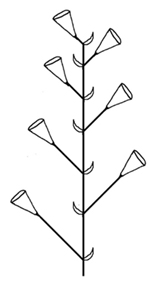 ; over-winters as a rosetterosette:
; over-winters as a rosetterosette:
(n) a radiating cluster of leaves, usually close to the ground at the base of a plant
 . Leaves oppositeopposite:
. Leaves oppositeopposite:
(adj) (of leaves) two leaves per node; in pairs on opposite sides of an axis
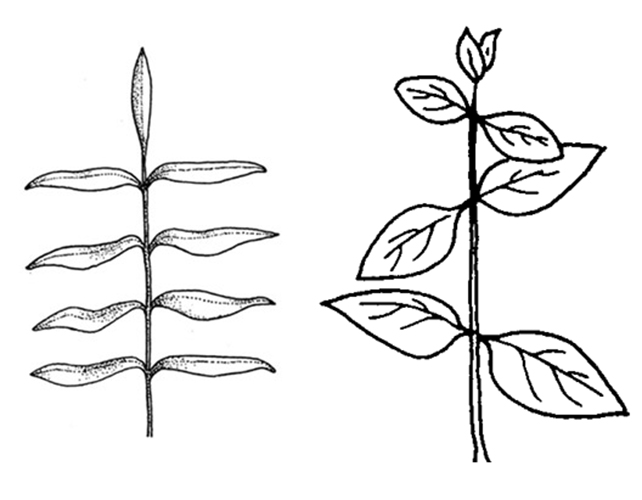 ; lower leaves with winged petioles, upper leaves sessilesessile:
; lower leaves with winged petioles, upper leaves sessilesessile:
(adj) attached directly, without a stalk
 ; leaf bladeblade:
; leaf bladeblade:
(n) (syn. lamina) the flat, expanded part of a leaf, frond, or petal (excluding, e.g., the petiole)
 oblanceolateoblanceolate:
oblanceolateoblanceolate:
(adj) lance-shaped, with attachment at or near the narrow end. (compare lanceolate)
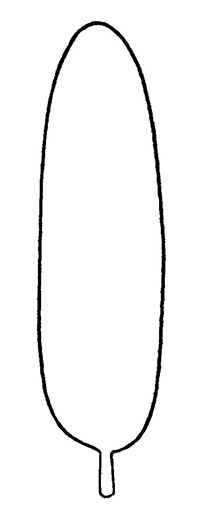 to ellipticelliptical:
to ellipticelliptical:
(adj) in the form of an ellipse (oval)
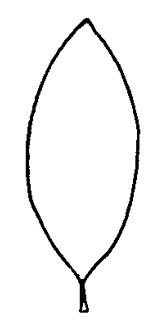 ; apexapex:
; apexapex:
(n) the point farthest from the point of attachment; the tip (often pointed)
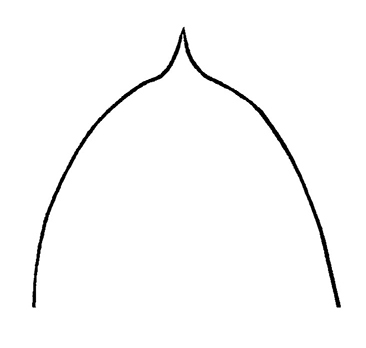 obtuseobtuse:
obtuseobtuse:
(adj) with a blunt or rounded apex and sides coming together at an angle of more than 90 degrees
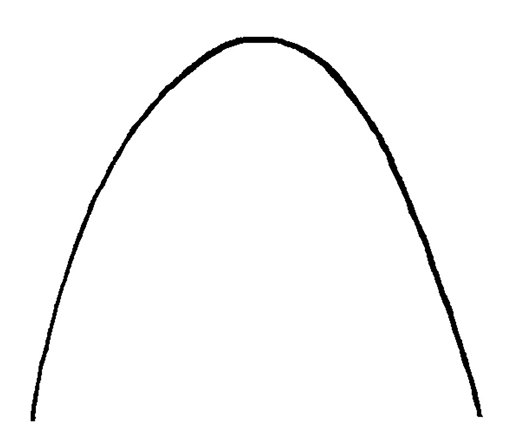 to acuteacute:
to acuteacute:
(adj) tapering to a sharp, pointed apex with more or less straight sides; broader than acuminate; forming an angle of less than 90 degrees
 ; base attenuateattenuate:
; base attenuateattenuate:
(adj) narrowing gradually to a point
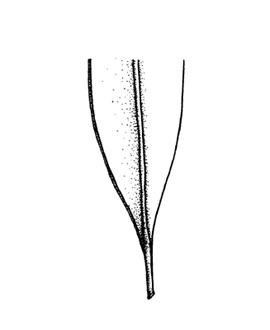 or ± round; marginmargin:
or ± round; marginmargin:
(n) edge; rim
 entire to shallowly serrateserrate:
entire to shallowly serrateserrate:
(adj) (of a leaf margin) bearing sharp teeth pointing forward or to the apex
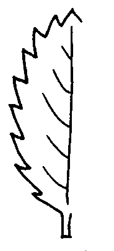 ; venationvenation:
; venationvenation:
(n) the arrangement of veins in a leaf
 pinnate, midribmidrib:
pinnate, midribmidrib:
(n) the main or central vein, line or rib in a leaf or perianth segment
 prominent. Inflorescenceinflorescence:
prominent. Inflorescenceinflorescence:
(n) the arrangement of flowers on the floral axis
 a terminalterminal:
a terminalterminal:
(adj) at the apex
 , compact thyrsethyrse:
, compact thyrsethyrse:
(n) inflorescence in which the main axis is racemose and the secondary axes are cymose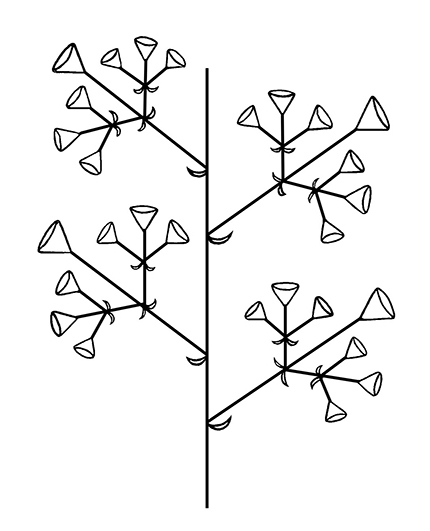 that appears as a dense cluster; bracts several, enclosing the calyxcalyx:
that appears as a dense cluster; bracts several, enclosing the calyxcalyx:
(n) the outer whorl of the perianth; all the sepals of a flower
 to form the “nest” of birds-in-a-nest. Flowers zygomorphiczygomorphic:
to form the “nest” of birds-in-a-nest. Flowers zygomorphiczygomorphic:
(adj) bilaterally symmetrical; symmetrical along only one plane
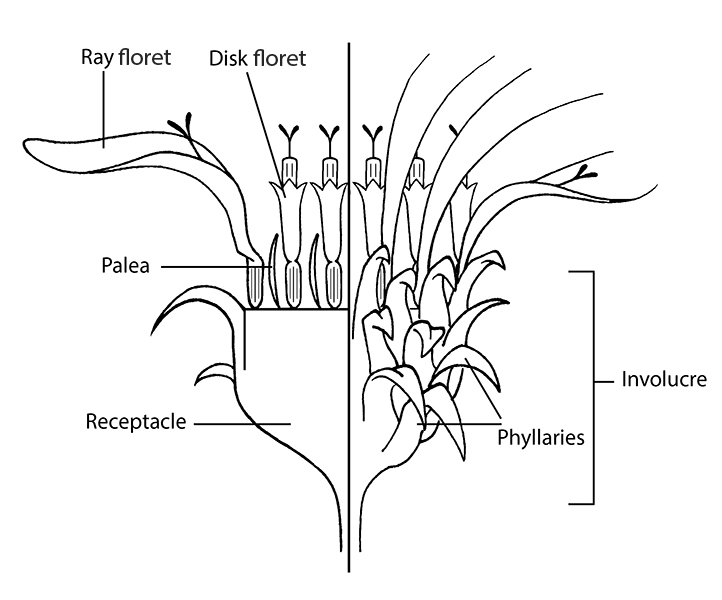 , bisexualbisexual:
, bisexualbisexual:
(adj) having both male and female sexual reproductive structures on one individual or in one flower
 , white or pink to lavender; calyxcalyx:
, white or pink to lavender; calyxcalyx:
(n) the outer whorl of the perianth; all the sepals of a flower
 small; corollacorolla:
small; corollacorolla:
(n) the inner whorl(s) of the perianth; all the petals of a flower
 tube 2-lipped, lower lip 3-lobed, upper lip cucullatecucullate:
tube 2-lipped, lower lip 3-lobed, upper lip cucullatecucullate:
(adj) hooded or hood-shaped
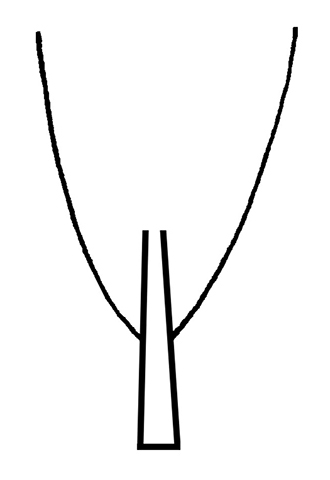 .
.
in marshes, bogs, swamps, mesic pine flatwoods, bottomland woodlands; in blackwater, less often in brown water
Macbridea contains two littorallittoral:
(adj) of or along the shore
 species: Macbridea alba and M. caroliniana. Macbridea caroliniana is similar to several species of Physostegia, but can be distinguished by the following characteristics: Physostegia purpurea has an elongated, erect, branching inflorescenceinflorescence:
species: Macbridea alba and M. caroliniana. Macbridea caroliniana is similar to several species of Physostegia, but can be distinguished by the following characteristics: Physostegia purpurea has an elongated, erect, branching inflorescenceinflorescence:
(n) the arrangement of flowers on the floral axis
 ; P. leptophylla is typically a taller plant, with bluntly toothed leaves and a loose spikespike:
; P. leptophylla is typically a taller plant, with bluntly toothed leaves and a loose spikespike:
(n) an indeterminate, unbranching inflorescence of sessile flowers or flower clusters on a usually elongated axis
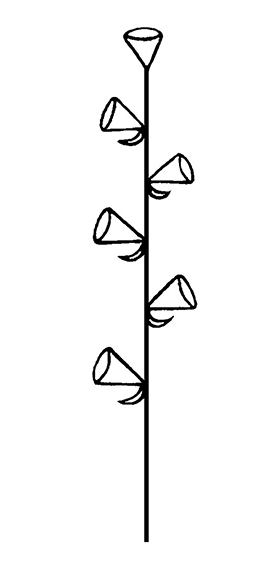 ; and P. angustifolia has sharply toothed leaves. M. alba can be easily recognized by its white flowers.
; and P. angustifolia has sharply toothed leaves. M. alba can be easily recognized by its white flowers.